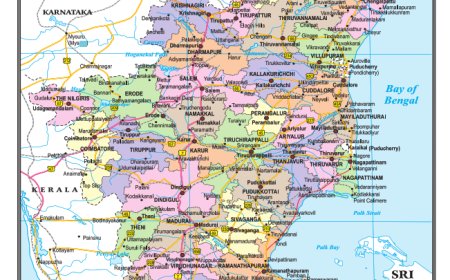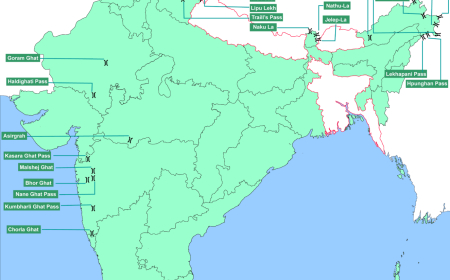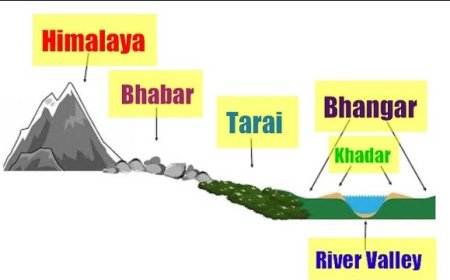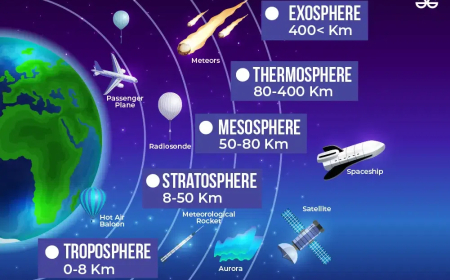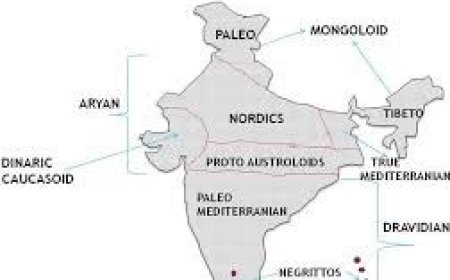Agricultural pattern and Livestock
Agricultural pattern and Livestock
Agricultural pattern and Livestock
-
Determinants
-
Land Holdings
-
Irrigation - Sources, Canal-Inundation, Perennial, Well- Open, Tube, Tank- Peninsular.
-
Modern Irrigation - drip irrigation, sprinklers and Rain Gun and central pivot irrigation
-
Multipurpose River Valley Projects - What purpose, Project River and State Table.
-
Types of Farming-Subsistence, Shifting, Intensive, Dry, Mixed, Terrace
-
Food crops (wheat, maize, rice, millets,pulses etc.).
-
Cash crops (sugarcane, tobacco, cotton, jute, oilseeds etc.).
-
Plantation crops (Tea, Coffee, Rubber, Spices).
-
Horticulture crops (Fruits, flowers and vegetables).
-
Livestock- Goat, Sheep, Fishing, Marine and Inland.Scheme-RGM
-
Fisheries- Marine and Inland.
-
Types of Silk-Wild -Muga, Eri, Tasar; Mulberry. Location and Features, Leading , CSB- HQ ,“Silk Mark” by the Silk Mark Organization of India.
-
Issues in Agriculture
-
Organisations- NDDB.
-
Various Boards- HQ, Ministry- Coffee, Rubber, Tea, Turmeric, Jute, Coir, Silk, Coconut.
-
Schemes of India
-
Second Green Revolution/Organic Farming
-
Tamil Nadu- Agriculture Determinants
-
Types and regions of Agriculture Practices in Tamil Nadu
-
Cropping Seasons Table
-
Food- Rice
-
Cash- Sugarcane and Cotton
-
Plantation
-
Livestock
-
Fisheries
-
Organisations- TRRI, TNAU, TANTEA, Aavin
-
Schemes in Tamilnadu
-
Tamil Nadu Agricultural Modernization and Water bodies Restoration Management (IAMWARM )
-
Seed Village Scheme
-
Kalaignarin All Village Integrated Agriculture Development Programme.
-
Special scheme for maize cultivation - Tamilnadu
-
Tamil Nadu became the third state to have a separate agricultural budget.-From 2021
-
Table
-
Land holdings
-
Board and Ministry
-
Revolution and Colours
-
Shifting Cultivation Names India and international
-
Seasons India
-
Seasons Tamilnadu
-
Institution- Year, Location, About.
Determinants of Agriculture
Agriculture in India is determined by a set of factors. Some of the important factors are:
-
Physical Factors:
-
Relief
-
Climate
-
Soil
-
Institutional Factors:
-
Size of farm holdings
-
Land tenure
-
Land reforms
-
Infrastructural Factors:
-
Irrigation
-
Power
-
Transport
-
Credit
-
Market
-
Insurance
-
Storage facilities
-
Technological Factors:
-
High yielding varieties of seeds
-
Chemical fertilisers
-
Insecticides
-
Machinery
Types of Farming
a) Subsistence Farming
A considerable proportion of farmers in the country practice subsistence farming. Farmers grow crops with the help of family members and consume almost the entire farm produce with little surplus to sell in the market. Preference is given to food crops. In addition to food crops, sugarcane, oilseeds, cotton, jute, and tobacco are also cultivated. Traditional farming methods result in low productivity.
b) Shifting Agriculture
This type of agriculture is performed by tribal people on a piece of forest land after clearing the trees through felling and burning the trunks and branches. Once the land is cleared, crops are grown for two to three years and then the land is abandoned as the fertility of the soil decreases. The farmers then move to new areas and repeat the process. They cultivate some grains and vegetable crops using manual labor. It is also called "Slash and burn" cultivation.
c) Intensive Farming
Intensive farming is an agricultural intensification and mechanization system that aims to maximize yields from available land through various means, such as heavy use of pesticides and chemical fertilizers.
d) Dry Farming
This type of farming is practiced in arid areas where irrigation facilities are lacking. Crops cultivated in these areas can withstand dry conditions. The crops generally grown with the help of irrigation are also grown under dry farming. In such circumstances, the yields are generally low. Most of the areas under dry cultivation entertain only one crop per year.
e) Mixed Farming
Mixed farming is defined as a system of farming which includes crop production, raising livestock, poultry, fisheries, beekeeping, etc., to sustain and satisfy as many needs of the farmer as possible.
f) Terrace Farming
This type of cultivation is practiced especially in hilly areas, where lands are of sloping nature. The hill and mountain slopes are transformed into a series of steps, making it suitable for cultivation.
Rice
Rice is an indigenous crop. India is the second largest producer of rice in the world after China. It is mainly a tropical crop, growing best with mean temperatures of 24°C and annual rainfall of 150 cm. Deep fertile clayey or loamy soils are well-suited for rice cultivation, and it also requires an abundant supply of cheap labor. Rice in India is sown in three ways:
-
Broadcasting
-
Ploughing or drilling
-
Transplanting
Due to the increased use of High Yielding Variety (HYV) seeds (CR Dhan 205, AR Dhan 306, CRR 451, etc.), many of the indigenous varieties have disappeared. In 2016, the leading rice-producing states were West Bengal (first in India), Uttar Pradesh, Punjab, Tamil Nadu, Andhra Pradesh, Bihar, Chhattisgarh, Odisha, Assam, and Haryana.
Wheat
Wheat is the second most important food crop in the country, after rice. It accounts for 22 percent of the total area and 34 percent of the total production of food grains in the country. It requires 10-15°C at the time of sowing and 20-25°C at the time of ripening of grains. Over 85% of India's wheat production comes from five states: Uttar Pradesh, Punjab, Haryana, Rajasthan, and Madhya Pradesh. Apart from these regions, the black soil tract of the Deccan covering parts of Maharashtra and Gujarat also contributes to major wheat production.
Jowar
Jowar is the third most important food crop in India. It is an indigenous plant of Africa and can grow in adverse climatic conditions. Its grains are rich in carbohydrates, protein, minerals, and vitamins, providing cheap food for a large section of the poor population. It is also used as fodder in many parts of the country. Jowar is primarily a crop of Peninsular India, with Maharashtra, Karnataka, and Madhya Pradesh being the leading producers.
Bajra
Bajra is an indigenous plant of Africa and forms the staple food for poor people. Its stalks are used as fodder for cattle and for thatching purposes. Bajra is a crop of dry regions. Rajasthan is the largest producer of bajra, followed by Uttar Pradesh, Haryana, Gujarat, and Maharashtra.
Barley
Barley is one of the important cereals in India. Besides being a part of the poor man’s diet, it is used for making barley water, beer, and whiskey. Rajasthan and Uttar Pradesh are the two leading producers of barley.
Pulses
Pulses include a large number of crops that are mostly leguminous and rich in vegetable protein. They are used as human food and for feeding cattle. Pulses fix atmospheric nitrogen in the soil and are usually rotated with other crops. India is the largest producer of pulses.
Cash Crops
Cash crops are cultivated for commercial purposes. These include sugarcane, tobacco, fibre crops (cotton, jute, and mesta), and oilseeds.
Sugarcane
-
India is the second-largest producer of sugarcane in the world.
-
Provides raw material for the sugar industry, the second-largest industrial category in India.
-
Used to produce sugar, gur, khandsari, molasses (for the alcohol industry), and bagasse (for the paper industry).
-
India ranks third in sugar production after Cuba and Brazil.
-
Leading producers: Uttar Pradesh, Bihar, Maharashtra, Karnataka, Tamil Nadu, and Gujarat.
Cotton
-
The most important cash crop in India.
-
Provides raw material for the largest industry in India.
-
India is the second-largest producer of cotton, after China.
-
Leading producers: Gujarat, Maharashtra, Andhra Pradesh, and Punjab.
Jute
-
Tropical fibre crop that grows well in alluvial soil.
-
Provides raw material for the jute industry.
-
Used for manufacturing gunny bags, carpets, hessian, ropes and strings, rugs, clothes, tarpaulins, upholstery, etc.
-
Leading producers: West Bengal, Bihar, Assam, and Meghalaya.
Oilseeds
-
Premier source of fat in the Indian diet.
-
Derived from crops such as groundnut, rapeseed, mustard, sesame, linseed, sunflower, castor seed, cottonseed, and niger seed.
-
Used to produce oil and oilcake, which are utilized for making lubricants, varnish, medicine, perfume, candles, soaps, manure, and cattle feed.
-
Gujarat is the largest oilseeds-producing state in India.
-
India is the second-largest producer of groundnuts, after China.
Plantation Crops
Plantation crops are cultivated for the purpose of exports, typically on large estates on hilly slopes. Major plantation crops in India include tea, coffee, rubber, and spices.
Tea
-
Plant Characteristics: Evergreen plant; grows in tropical and subtropical climates; labor-intensive; grows faster under light shade.
-
Climate Requirements: High rainfall; roots cannot tolerate waterlogging.
-
Major Varieties:
-
BOHEA (originated from China)
-
ASSAMICA (from India)
-
Hybrid varieties developed by mixing the two.
-
Production: India is the second-largest producer of tea after China.
-
Leading Producers in India: Assam, Tamil Nadu, Kerala, West Bengal.
Coffee
-
Growth Conditions: Grown in shade; effective at altitudes between 1,000 and 1,500 meters above sea level.
-
Major Varieties:
-
Arabica (High quality; cultivated more in India)
-
Robusta (Inferior quality)
-
Production: India is the 7th largest producer of coffee globally.
-
Leading Producers in India: Karnataka (produces 71% in India and 2.5% globally as of 2018).
Rubber
-
Establishment: First established in Kerala in 1902.
-
Climate Requirements: Hot and wet climatic conditions (temperature above 20°C and rainfall above 300 cm).
-
Ownership: Most land under rubber belongs to small landholders.
-
Major Growing Areas: Tamil Nadu, Kerala, Karnataka, Andaman and Nicobar Islands.
Spices
-
Historical Significance: India has been world-famous for its spices since ancient times.
-
Uses: Flavouring or tampering cooked food, preparing medicines, dyes, etc.
-
Common Spices: Pepper, chillies, turmeric, ginger, cardamom, clove, areca.
-
Kerala Leading Producer
Horticulture Crops
Horticulture refers to the cultivation of fruits, flowers, and vegetables. These crops are essential supplements to the human diet, providing vital minerals, vitamins, and fibers necessary for maintaining health. India is the second-largest producer of fruits and vegetables in the world.
Livestock
Importance of Livestock in India
-
Livestock is an essential part of the farming system in India.
-
The sector is socially and economically significant due to its multi-functional outputs and contributions to socio-cultural security.
-
It improves food and nutritional security by providing nutrient-rich food products.
-
Generates income and employment.
-
Acts as a cushion against crop failure.
-
Provides draught power and manure inputs to the crop subsector.
Cattle in India
-
Cattle make up 37.3 percent of the livestock population in India.
-
India has the second-largest cattle population globally, after Brazil.
-
The cattle population in India comprises different breeds, including:
-
Milch Breed
-
Draught Breed
-
Mixed or General Breed
Goats in India
-
Goats are often referred to as the "poor man’s cow."
-
They provide milk, meat, skin, and hair.
-
Goats are the main source of meat in the country.
-
Rajasthan leading.
Buffaloes in India
-
Buffaloes are a significant source of milk supply in India.
-
Uttar Pradesh has the highest number of buffaloes (28.2%), followed by Rajasthan (9.6%) and Andhra Pradesh (7.9%).
Dairy, Meat, and Wool Production
-
According to the 2016-17 Census by the State/UT Animal Husbandry Department:
-
Leading states in dairy production include Uttar Pradesh, Rajasthan, and Madhya Pradesh.
-
Uttar Pradesh is the leading producer of meat, followed by Maharashtra and West Bengal.
-
Rajasthan is the leading state in wool production, followed by Karnataka.
Fisheries
Economic Importance of Fisheries in India
-
Fisheries are a vital economic activity and a flourishing sector in India.
-
The fishing industry employs over 14 million people in coastal states.
-
India produces about 3 percent of the world's fish and ranks second in global fish production, after China.
-
The fisheries sector helps augment food supply, generate employment, raise nutritional levels, and earn foreign exchange.
Types of Fisheries in India
-
Marine or Sea Fisheries
-
Includes coastal, offshore, and deep-sea fisheries, mainly on the continental shelves.
-
Kerala leads in marine fish production in India.
-
Inland or Fresh Water Fisheries
-
Sources include rivers, lakes, canals, reservoirs, ponds, and tanks.
-
Inland fisheries contribute about 50 percent of the country's total fish production.
-
Andhra Pradesh is the leading producer of inland fish in India.
Varieties of Fish in India
-
Important varieties of fish caught by fishermen include:
-
Catfish
-
Herrings
-
Mackerels
-
Perches
-
Eels
-
Mullets
TN IAM Project
The World Bank Supported TN IAM (Irrigated Agriculture Modernisation) Project is a follow up of IAMWARM (Irrigated Agriculture Modernisation and Water-Bodies Restoration and Management) Project which has made significant development impacts in the state by
-
modernising irrigation infrastructure,
-
improving water use efficiency,
-
enhancing yields and productivity of agriculture in a climate resilient production systems,
-
diversification towards high value crops,
-
strengthening the institutional reforms through Participatory Irrigation Management (PIM) and Water Users Association (WUA).
Seed Village Scheme
Govt. of India is implementing Seed Village Programme (Beej Gram Yojana) since 2014-15 to upgrade the quality of farmer’s saved seeds. Under this programme financial assistance for distribution of foundation/certified seeds at 50% of seed cost for cereal crops and 60% for pulses, oilseeds, fodder and green manure crops is available for up to one acre per farmer
Kalaignarin All Village Integrated Agriculture Development Programme.
M.K. Stalin launched the Kalaignar’s All Village Integrated Agriculture Development Project in the districts of Krishnagiri, Dharmapuri and Erode.
Under the programme, the schemes implemented by more than 15 departments including agriculture, horticulture and agricultural engineering will be focused on the villages.
The government is planning to cover all the panchayats in the district in a few years.
1. Creation of water source (Borewell/Tubewell) for identified cluster in non irrigated areas on community basis.
2. Creation of water source (Borewell/Tubewell) for individual SC/ST farmers.
3. Construction of Farm Ponds.
4. Desilting and Improvement works of Panjayath union MI tanks,Ooranies,Ponds and Supply channels.
OBJECTIVES
✴ To bring fallow lands under cultivation and increase the cultivable area by creation of new water sources.
✴ To increase the agricultural production and productivity.
✴ To increase the economic status of farmers.
Special scheme for maize cultivation - Tamilnadu
- The State government of Tamilnadu will implement a special scheme to increase the area of maize cultivation in 18 districts at a cost of ₹30 crore.
- A kit with high-quality maize seeds, natural and liquid fertilisers, and urea would be distributed to 50,000 farmers.
- It aims to increase the area under maize cultivation by 50,000 hectares.
- For 2024-25, the State government has set a target to increase the area under millets cultivation to 9.95 lakh hectares with a production of 39.09 lakh metric tonnes.
- It was 31.31 lakh metric tonnes two years ago.
- The total food grain production target was 129.63 lakh metric tonnes for 2024-25.
- The food grain production was 118.02 lakh metric tonnes last year.
Tamil Nadu became the third state to have a separate agricultural budget.-From 2021
Types of Landholdings in India
|
Type |
Size |
Percentage |
|
Marginal |
Size 1 hectare or less. |
|
|
Small |
Size 1 to 2 hectares. |
|
|
Semi-medium holdings |
Size 2 to 4 hectares |
|
|
Medium |
Size 4 to 10 hectares |
|
|
Large |
More than 10 hectares |
|
Board |
Ministry |
|
Coir Board-Cochin |
Min of MSME |
|
Coconut Development Board-Cochin |
Min of Agriculture |
|
Silk Board-Bangalore Jute Board-West Bengal |
Min of Textiles |
|
Geological Survey of India. Indian Bureau of Mines |
Min of Mines |
|
Coffee Board-Bangalore Tea Board-Kolkata Rubber Board Tobacco Board Spices Board Turmeric Board-2023 APEDA IPAB- Intellectual Property Appellate Board |
Min of Commerce and Industry |
|
TNAU |
Tamil Nadu Agricultural University |
Coimbatore |
|
|
TRRI |
Tamil Nadu Rice Research Institute (TRRI) |
1985 |
Aduthurai, in Thanjavur |
|
TANTEA |
Tamil Nadu Tea Plantation Corporation Limited |
1968 |
To rehabilitate Sri Lankan repatriates trained in the fine art of tea culture. Biggest Black Tea producer in India with high quality clonal tea plantations spread over nearly 4053.758 ha. in Nilgiris and Coimbatore districts |
|
AAVIN- (TNCMPFL) |
Tamil Nadu Cooperative Milk Producers Federation Limited |
1858 |
|
|
ICAR-Indian Institute of Rice Research |
1965 |
Hyderabad |
|
|
Indian Council of Agricultural Research (ICAR) |
1929 |
What's Your Reaction?







